Food coloring isn’t just for frosting anymore! Your child will be amazed by this brilliant experiment that explores the forces of surface tension — the scientific name for the way the "skin" of a liquid holds together.
Since this project uses food coloring, it’s fun to make a "lab coat" from an old button-down shirt to prevent staining. Write your child’s name on the pocket with permanent marker and let them decorate it!
You'll Need:
- A small, shallow dish or plate
- Milk (2% or whole milk are best, but skim milk works too)
- Dish soap
- Cotton swabs like Q-tips
- Food coloring
How to Make Tie-Dye Milk
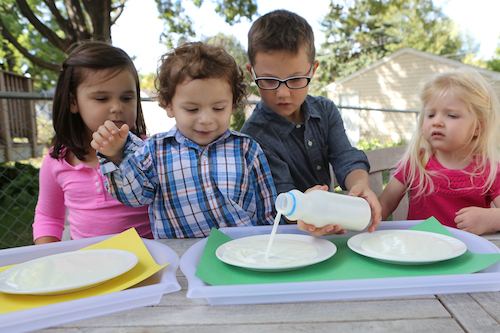
Step 1: Add just enough milk to cover the bottom of the dish, since a thin layer works best.
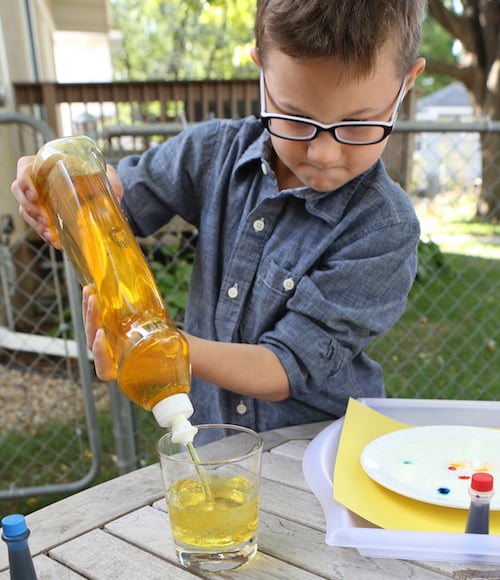
Step 2: In a separate small container, have your child mix about half a cup of water with a big squirt of dish soap (a teaspoon or so).
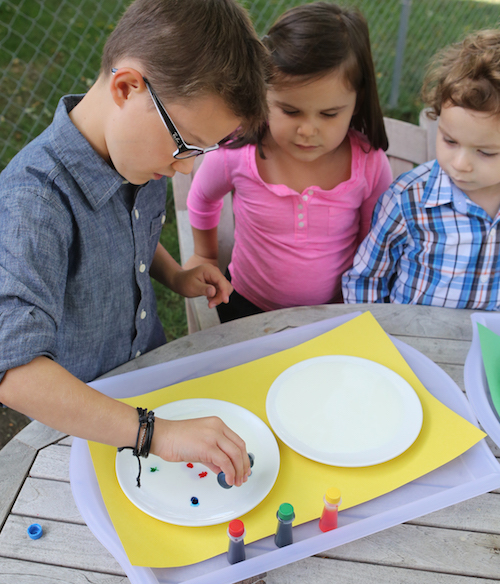
Step 3: Let your young scientist drop several dots of food coloring into the milk (at least two drops of each color).
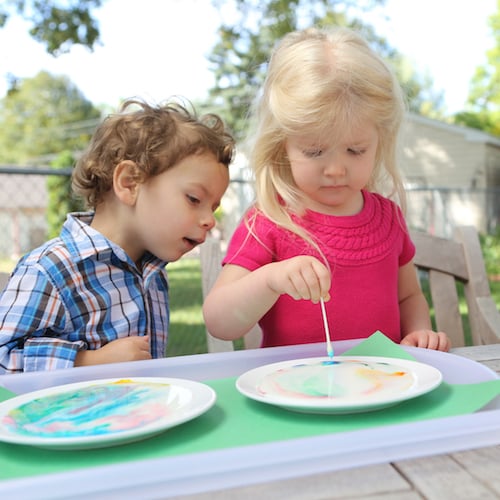
Step 4: To break the surface tension of the milk, simply dip a Q-tip into the dish soap mixture and then touch it to the milk. Don’t stir! The soap will break the surface tension of the milk and the food coloring will swirl around in interesting patterns, as if by magic.
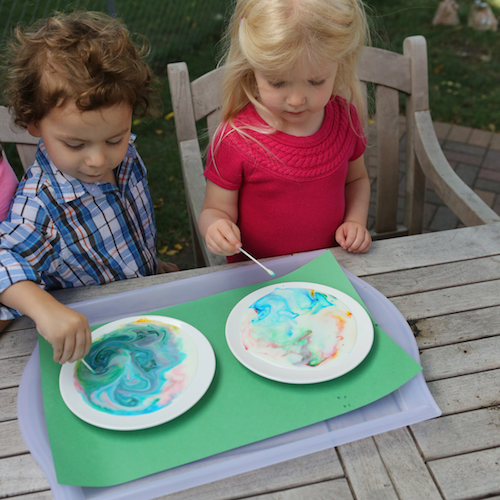
Step 5: Play with it! Children can keep re-wetting Q-tips with soapy water and touching them to the milk. Try the experiment with a drop of dish soap straight from the soap container. Your children can compare how the experiment works with skim milk versus whole milk.
Art lovers can draw a picture of how the milk looks before and after touching it with the Q-tip, or take pictures of the beautiful patterns. They can even put a paper towel on the milk to lift the color.
The Science Behind the Fun
Imagine that surface of liquids is a stretched elastic skin, like the rubber on a balloon full of air.
When the surface tension, or skin of the milk in this experiment is broken by the dish soap, the food coloring and milk are free to swirl around.
You can find more experiments like this one at kitchenpantryscientist.com, and in my books Kitchen Science Lab for Kids (Quarry Books) and Outdoor Science Lab for Kids (Quarry Books).
© Quarry Books, 2016/Outdoor Science Lab for Kids
Featured Photos Credit: © Quarry Books

